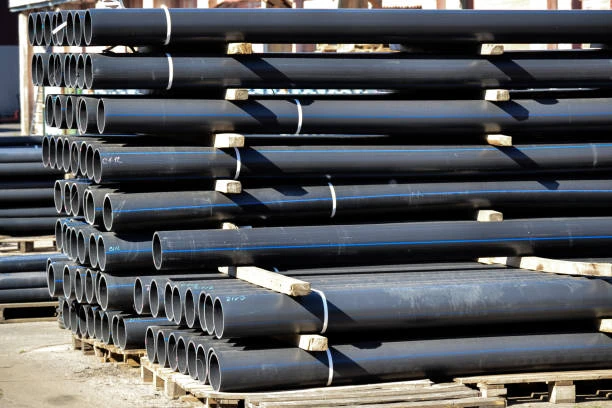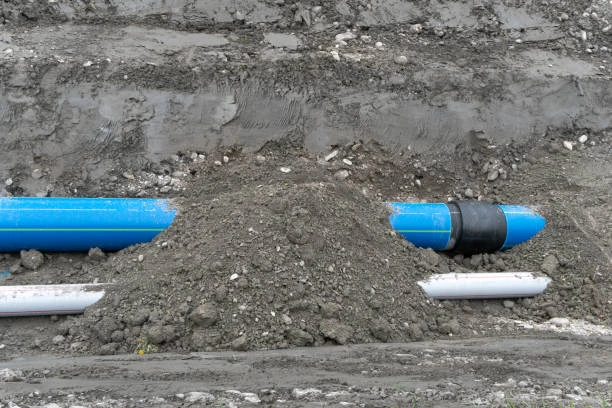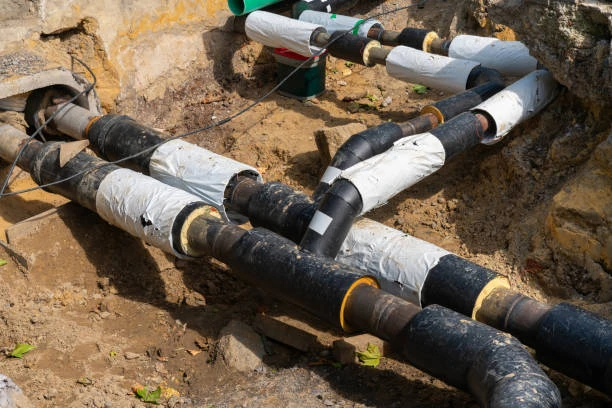In a notable development for the construction and infrastructure industries, a new plant in Texas has begun extruding 65-inch diameter High-Density Polyethylene HDPE pipe. This advancement not only signifies a step forward in manufacturing capabilities but also addresses the growing demand for larger, more durable piping solutions. In this article, we will explore the significance of this development, the properties of HDPE pipes, their applications, and the benefits of using such large-diameter pipes in various projects.

Understanding HDPE Pipe
High-Density Polyethylene (HDPE) pipes are a versatile and robust solution used extensively in various industries. Made from thermoplastic polymers, HDPE pipes are known for their excellent mechanical properties, chemical resistance, and longevity. They are widely used in applications that require reliable and durable piping solutions.
Key Characteristics of HDPE Pipe
- Durability: HDPE pipes have a lifespan exceeding 50 years, which makes them ideal for long-term projects.
- Chemical Resistance: They are resistant to a wide range of chemicals, making them suitable for industrial applications.
- Corrosion Resistance: Unlike metal pipes, HDPE does not rust or corrode, ensuring long-term reliability.
- Flexibility: HDPE pipes can withstand environmental stresses, such as ground movement, making them adaptable to various installation conditions.
- Eco-Friendly: Being recyclable, HDPE contributes to sustainability efforts in construction and manufacturing.
The Significance of Extruding 65-Inch Diameter HDPE Pipe
The ability to extrude 65-inch diameter HDPE pipes represents a significant technological advancement. This size is essential for many large-scale applications, particularly in water management and infrastructure development.
1. Enhanced Manufacturing Capabilities
This new plant enhances the manufacturing capabilities of HDPE pipes, enabling the production of larger diameters that can meet the demands of modern infrastructure projects. With advanced extrusion technology, the plant can produce pipes that are not only larger but also maintain high-quality standards.
2. Meeting Market Demand
The demand for larger diameter pipes is increasing due to urbanization, population growth, and the need for improved infrastructure. This plant’s capability to extrude 65-inch pipes will help meet the needs of municipalities and industries looking for robust solutions for water supply and sewage management.
Applications of 65-Inch Diameter HDPE Pipe
The applications of 65-inch diameter HDPE pipes are diverse and span several sectors:
1. Municipal Water Supply Systems
Large-diameter HDPE pipes are critical for municipal water supply systems, allowing for efficient transportation of water to communities. Their strength and flexibility make them ideal for high-volume applications.
2. Sewage and Wastewater Management
In sewage and wastewater management, large HDPE pipes provide efficient flow and reduce the risk of blockages. Their smooth interior surfaces minimize friction losses, enhancing overall system performance.
3. Stormwater Management
65-inch HDPE pipes are also used in stormwater management systems, where they help control runoff and prevent flooding. Their capacity to handle large volumes of water makes them essential for effective drainage solutions.
4. Industrial Applications
Industries such as oil and gas, mining, and chemical processing can benefit from large-diameter HDPE pipes for transporting slurries and other materials. Their resistance to harsh chemicals ensures safe and efficient operation.
5. Agricultural Irrigation
In agriculture, large-diameter HDPE pipes are used in irrigation systems, allowing for efficient water distribution across vast fields. Their durability and resistance to UV radiation make them suitable for outdoor use.
Benefits of Using HDPE Pipe
Investing in HDPE pipes, especially in larger diameters, offers numerous advantages:
1. Cost-Effectiveness
Although the initial investment may be higher than traditional materials, HDPE pipes provide long-term savings due to their durability and low maintenance requirements. This cost-effectiveness makes them an attractive option for large-scale projects.
2. Reduced Leakage
HDPE pipes have lower leakage rates compared to traditional materials, which is crucial for water supply systems. This characteristic helps conserve water and reduce operational costs for municipalities.
3. Lightweight and Easy to Install
The lightweight nature of HDPE pipes simplifies transportation and installation. This ease of handling reduces labor costs and allows for quicker project completion.
4. Environmental Sustainability
HDPE pipes are made from recyclable materials and can be recycled at the end of their life cycle. Their production process also uses less energy compared to traditional materials, supporting sustainability initiatives.
5. Flexible Installation Options
The flexibility of HDPE pipes allows for various installation methods, including trenchless technology, which minimizes disruption to the surrounding environment and existing infrastructure.
Market Trends in HDPE Pipe Production
The HDPE pipe market is evolving, influenced by several trends that reflect its growing importance:
1. Increased Demand for Infrastructure
As urbanization accelerates globally, the demand for reliable infrastructure, including water supply and sewage systems, is on the rise. This trend is driving the production of larger diameter HDPE pipes.
2. Shift Towards Sustainable Practices
With increasing awareness of environmental issues, many industries are seeking sustainable materials. HDPE pipes align with this trend due to their recyclability and eco-friendly properties.
3. Technological Advancements
Advancements in manufacturing technologies are enhancing the production capabilities of HDPE pipes. Innovations in extrusion techniques enable the production of larger and more complex piping solutions.
4. Focus on Water Conservation
As water scarcity becomes a pressing issue, the adoption of efficient piping systems is essential for conservation efforts. HDPE pipes, with their low leakage rates and durability, play a crucial role in this endeavor.
Future Prospects for the HDPE Pipe Market
The future of the HDPE pipe market looks promising, especially with the new plant in Texas producing 65-inch diameter pipes.
1. Growth in the HDPE pipe Construction Sector
The construction sector is expected to continue growing, driven by urbanization and infrastructure investments. The demand for HDPE pipes, particularly in larger sizes, will likely increase in tandem.
2. Job Creation
The establishment of the new plant will create jobs in manufacturing, logistics, and quality control. This job creation will benefit the local economy and contribute to workforce development.
3. Strengthening Supply Chains
The ability to produce large-diameter HDPE pipes locally will enhance supply chains, reducing lead times and transportation costs for contractors and municipalities.
4. Advancements in HDPE pipe Manufacturing Processes
Continued investment in technology and research will further improve HDPE pipe manufacturing processes, leading to better quality and performance in the future.
Conclusion
The new Texas plant that is extruding 65-inch diameter HDPE pipes represents a significant advancement in the industry. With its potential to meet the increasing demand for durable and reliable piping solutions, this facility will play a crucial role in supporting infrastructure projects across various sectors. As urbanization continues and environmental considerations rise, HDPE pipes are poised for substantial growth, benefiting not only the manufacturing sector but also the communities they serve.
FAQs
1. What are HDPE pipe used for?
HDPE pipes are used in water supply systems, sewage and drainage applications, industrial transport, stormwater management, and agricultural irrigation.
2. How long do HDPE pipe last?
HDPE pipes can last over 50 years with proper installation and maintenance.
3. Are HDPE pipe environmentally friendly?
Yes, HDPE pipes are recyclable and have a lower environmental impact compared to traditional piping materials.
4. What are the advantages of using large-diameter HDPE pipe?
Large-diameter HDPE pipes offer benefits such as reduced leakage, cost-effectiveness, and suitability for high-volume applications, including municipal water supply and sewage management.
5. How are HDPE pipe installed?
HDPE pipes can be installed using various methods, including trenching, directional drilling, and fusion welding, depending on the application and site conditions.


















![PE Pipe Market Size, Share, Trend [2024-2032] Forecast Report PE Pipe Market](https://pipefittingblog.com/wp-content/uploads/2024/10/8cdda3b4892b4617b9072c650cb5ee0d.webp)